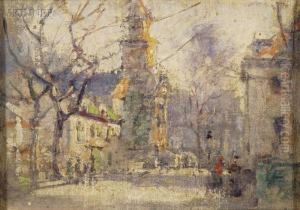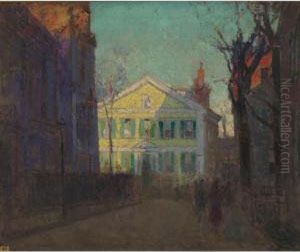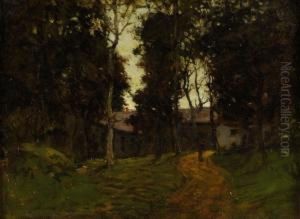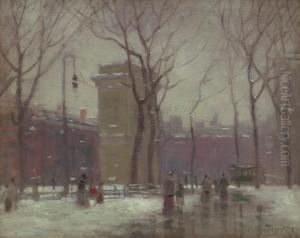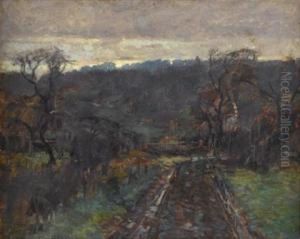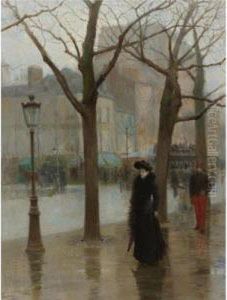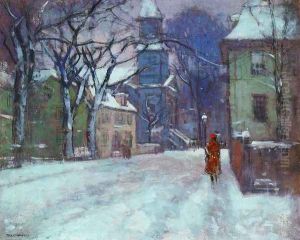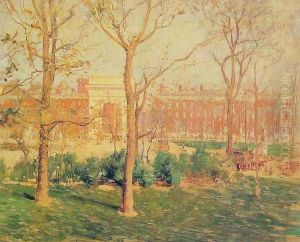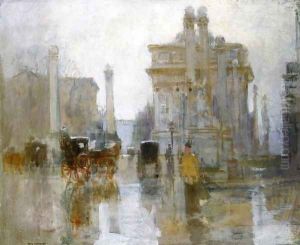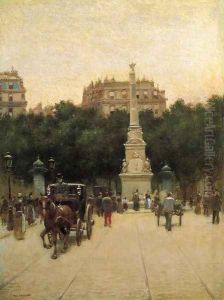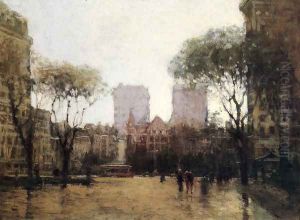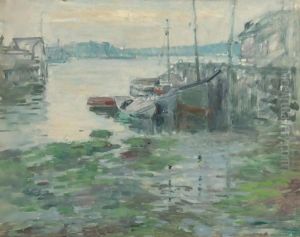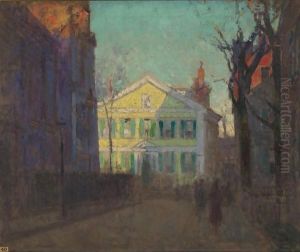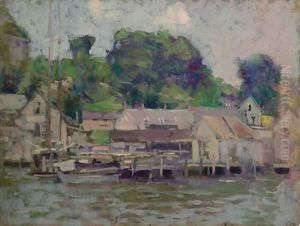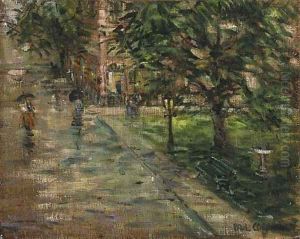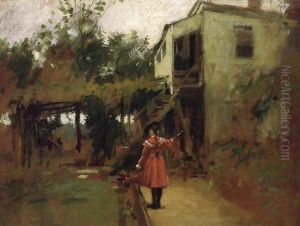Paul Cornoyer Paintings
Paul Cornoyer was an American painter known for his atmospheric scenes of urban life, particularly in New York City, during the late 19th and early 20th centuries. Born on August 15, 1864, in St. Louis, Missouri, he began his artistic training at the St. Louis School of Fine Arts. Seeking to further his education and experience the heart of the art world at the time, he moved to Paris in the 1880s, where he studied under renowned academic painters such as William-Adolphe Bouguereau and Tony Robert-Fleury at the Académie Julian. In Paris, Cornoyer was influenced by the Impressionist movement, and his work began to reflect the Impressionist interest in light and atmosphere. Upon his return to the United States, he settled in New York City, where he became captivated by the cityscape. His paintings from this period often depict rain-soaked streets, the soft glow of city lights, and the bustling life of the city, captured with a muted palette and a subtle, poetic sensibility. Cornoyer's work received significant recognition during his lifetime. He exhibited regularly at the National Academy of Design and also at the Pennsylvania Academy of the Fine Arts. His paintings are now held in many important museum collections, including the Metropolitan Museum of Art and the Saint Louis Art Museum. Despite his success, Cornoyer never achieved the fame of some of his contemporaries, and his work was somewhat overshadowed by the American Impressionists and the Ashcan School. Paul Cornoyer's contribution to American art lies in his evocative portrayal of urban life and the changing landscape of the American city during a transformative period. He captured the essence of New York City at the turn of the century with a blend of realism and romanticism, offering a unique perspective on the everyday scenes of his time. He died on June 17, 1923, leaving behind a legacy of work that continues to be appreciated for its quiet beauty and historical significance.

